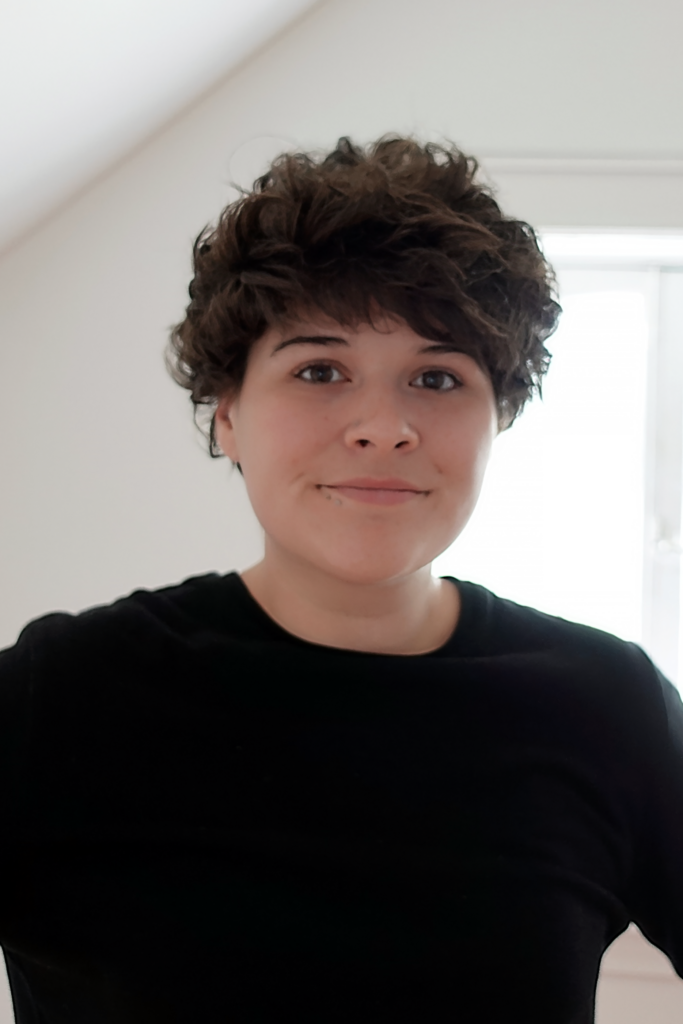Based on a conversation with Madison Curry, one would think she has held her position as a technical support specialist with the Tech Den team for years. To learn she has only been part of the WashU IT family since March is a bit surprising.

The Salina, Kansas native earned a Bachelor of Fine Arts focusing on metalsmithing from the University of Kansas and began her career in the jewelry industry. That career choice brought her to the St. Louis area. For 4 years she crafted 3D creations including rings, earrings, necklaces, and other artistic pieces.
During her studies she never imagined she would one day test 3D prototypes of oxygen masks for premature babies. But for the last several months she has worked closely with her colleagues, Tech Den 3D Print Tech Zach O’Connor and Staff Scientist Anusha Elumalai from the Mallinckrodt Institute of Radiology (MIR) 3D Lab, to revolutionize the standard of care for preemies, increasing not only the babies’ ability to take in oxygen, but their chance of survival. O’Connor ran the 3D models and Curry has been part of the extensive process of materials testing.
The project began prior to Curry’s arrival. She explained the delicate task at hand is ensuring the material being used protects the noses of newborns, adding, “With traditional masks, the weight can apply a great deal of pressure on the bridge of the nose causing damage – even breaking the nose.”
Using a lightweight yet durable rubber-like material that is pliable, the masks Curry and her colleagues are 3D modeling will allow tubes to be securely fastened to them, while maintaining the elastic properties necessary to comfortably stretch over the faces of infants. The team has researched materials that meet these requirements and more.
“The material we’re using for prototyping is soft on the skin,” Curry noted. “It’s not abrasive and it’s biocompatible.”
There are various other researchers involved in the project with the 3D modeling and related investigation being included as part of a medical research paper. Curry added O’Connor’s bioengineering background has proven helpful as the group has explored options.
“We’ve been through quite a few iterations of materials and tests now,” she said, noting crush tests were conducted to ensure the material will not crush or shatter under pressure. As a next step, extensive testing will begin to make sure the seal securely keeps oxygen from leaking out of the sides of the mask.
Curry loves the variability of her job, with her day-to-day responsibilities altering sometimes wildly, from fixing bugs and writing code, creating models and testing them, researching materials, and interviewing students about their projects. She enjoys working with the entire WashU community, from her colleagues in WashU IT to faculty, staff, and students.
“I’m always learning and that’s the best part,” Curry said.
She is a natural problem solver, which she said is what drew her to the art world: “In art, you’re used to trying different things and failing a lot. The same thing is true in programming. There’s a lot of experimenting and failing. But that’s what makes great problem solving.”
Her penchant for problem solving led Curry to take free courses and earn numerous certificates through Launch Code. She heard about Launch Code, which is a highly competitive front-end and back-end (full-stack) online web development program, and became fascinated watching videos, considering how the worlds of programming and 3D modeling could be intertwined.
She earned a certificate in Rhino 3D, which is a Computer Aided Design (CAD) program used in architecture but also is a valuable component of 3D modeling in the jewelry world and beyond.
While she said getting acquainted with WashU lingo has been a challenge, “I couldn’t have asked for a better community of people and the support for learning new things.” She appreciates having the opportunity to work with her manager, Scott Markovich, and her director, Sherry Holmes, who she said have “built a great team of people.”